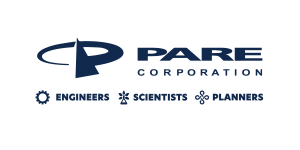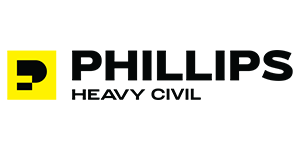Inspection of Concrete Structures
Contents
- Structural Inspections
- What to Look For
- Preparing for an Inspection
- Dam Owner Academy Series
- Save this page as a printable Dam Owner's Fact Sheet [PDF]
Dams, dikes, and levees must not be thought of as part of the natural landscape, but as manmade structures which must be designed, inspected, operated, and maintained accordingly. Routine maintenance and inspection of dams and appurtenant facilities should be an ongoing and active process to ensure that structural failures do not occur which can threaten the overall safety of the dam. The information provided in this fact sheet pertains entirely to the inspection of concrete structures used at dams. The intention is to help dam owners become more aware of common problems that are typically encountered with concrete so that they can more readily address the seriousness of a condition whenever it arises.
Structural Inspections
Concrete surfaces should be visually examined on a periodic basis for spalling and deterioration due to weathering, unusual or extreme stresses, erosion, cavitation, vandalism, and other destructive forces. Structural problems are indicated by cracking, exposure of reinforcing bars, large areas of broken-out concrete, misalignment at joints, undermining and settlement in the structure. Rust stains that are noted on the concrete may indicate that internal corrosion and deterioration of reinforcement steel is occurring. Spillway floor slabs and upstream slope protection slabs should be checked for erosion of underlying base material otherwise known as undermining. Concrete walls and tower structures should be examined to determine if settlement and misalignment of construction joints has occurred.
What to Look For
Cracking: Concrete structures can exhibit many different types of cracking. Deep, wide cracking is due to stresses which are primarily caused by shrinkage and structural loads. Minor or hairline surface cracking is caused by weathering and the quality of the concrete that was applied. The results of this minor cracking can be the eventual loss of concrete, which exposes reinforcing steel and accelerates deterioration. Generally, minor surface cracking does not affect the structural integrity and performance of the concrete structure. Cracks through concrete surfaces exposed to flowing water may lead to the erosion or piping of embankment or foundation soils from around and/or under the concrete structure. In this case, the cracks are not the result of a problem but are the detrimental condition which leads to piping and erosion.
Structural cracking of concrete is usually identified by long, single or multiple diagonal cracks with accompanying displacements and misalignment. Cracks extending across concrete slabs which line open channel spillways or provide upstream slope wave protection can indicate a loss of foundation support resulting from settlement, piping, undermining, or erosion of foundation soils. Piping and erosion of foundation soils are the result of inadequate underdrainage and/or cutoff walls. Items to consider when evaluating a suspected structural crack are the concrete thickness, the size and location of the reinforcing steel, the type of foundation, and the drainage provision for the structure.
Seepage: Seepage at the discharge end of a spillway or outlet structure may indicate leakage of water through a crack. Proper underdrainage for open channel spillways with structural concrete floors is necessary to control this leakage. Flows from underdrain outlets and pressure relief holes should also be observed and measured. Cloudy flows may indicate that piping is occurring beneath or adjacent to the concrete structure. This could be detrimental to the foundation support.
Concrete surfaces adjacent to contraction joints and subject to flowing water are of special concern especially in chute slabs. The adjacent slabs must be flush or the downstream one slightly lower to prevent erosion of the concrete and to prevent water from being directed into the joint during high velocity flow.
Poor Drainage: All weep holes should be checked for the accumulation of silt and granular deposits at their outlets. These deposits may obstruct flow or indicate loss of support material behind the concrete surfaces. Tapping the concrete surface with a hammer or some other device will help locate voids if they are present as well as give an indication of the condition and soundness of the concrete. Weep holes in the concrete are used to allow free drainage and relieve excessive hydrostatic pressures from building up underneath the structure. Excessive hydrostatic pressures underneath the concrete could cause it to heave or crack which increases the potential for accelerated deterioration and undermining. Periodic monitoring of the weep hole drains should be performed and documented on a regular and routine basis to ensure that they are functioning as designed.
Inspection of intake structures, trash racks, upstream conduits, and stilling basin concrete surfaces that are below the water surface is not readily feasible during a regularly scheduled inspection. Typically, stilling basins require the most regular monitoring and major maintenance because they are holding ponds for rock and debris, which can cause extensive damage to the concrete surfaces during the dissipation of flowing water. Therefore, special inspections of these features should be performed at least once every five years by either dewatering the structure or when operating conditions permit. Investigation of these features using experienced divers is also an alternative.
Preparing for an Inspection
Before an inspection of the dam's concrete facilities is performed, it is recommended that a checklist be developed that includes all the different components of the spillway and/or outlet works. The checklist should also include a space for logging any specific observations about the structure and the state of its condition. Photographs provide invaluable records of changing conditions. A rapidly changing condition may indicate a very serious problem and documentation of prior inspections is very helpful in making this determination If there are any questions as to the seriousness of an observation the state dam safety agency, or a registered professional engineer experienced with dams, should be contacted.
Dam Owner Academy: Spillways & Outlet Works
The Dam Owner Academy is a series of videos to educate and inform owners on all aspects of operating and maintaining a dam safely. The videos concisely present the critical basics of owner responsibilities and are available as a free resource for owners and those conducting owner outreach programs.
Inspection of Concrete Structures is discussed in the "Spillways & Outlet Works" video.


































